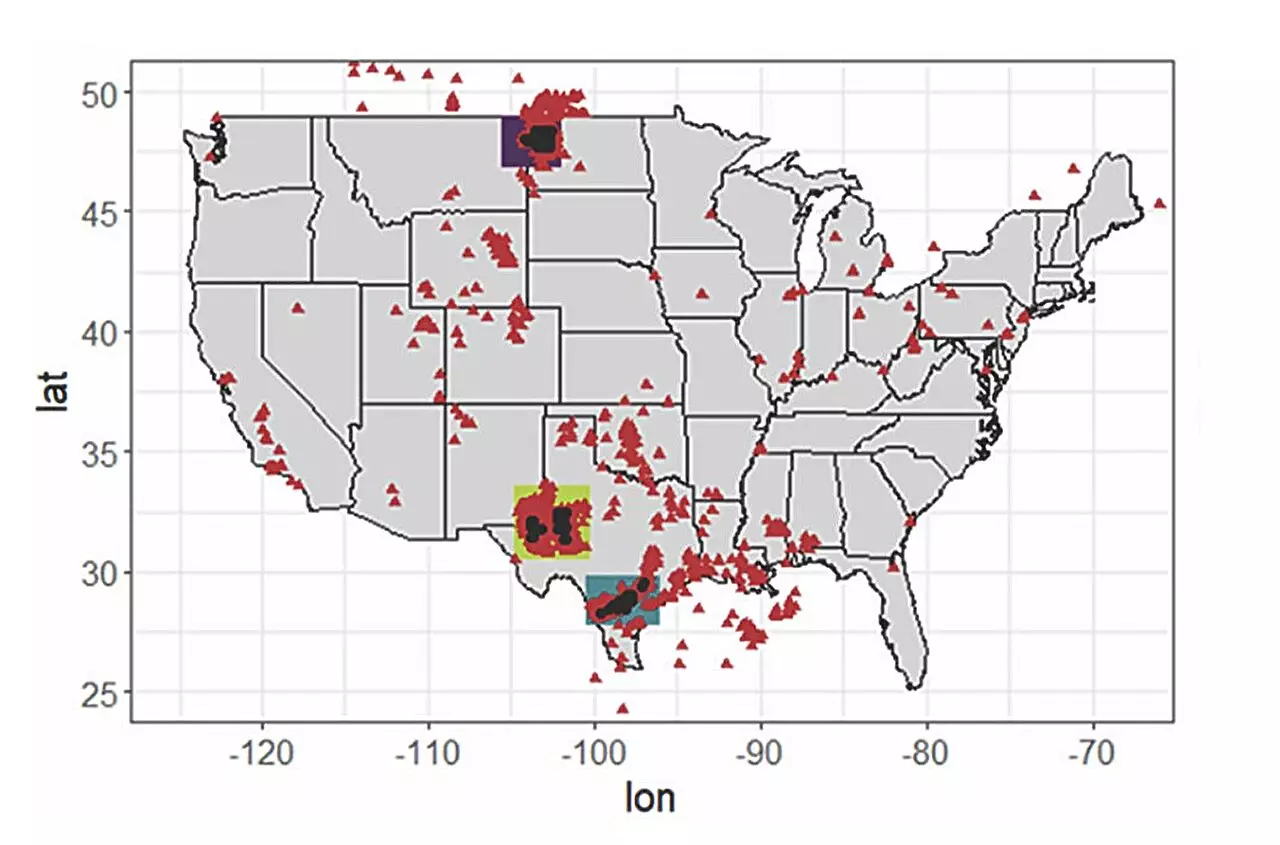Natural gas flaring has become a common practice in the United States to dispose of the byproduct gas from oil extraction. While it helps reduce safety concerns and lessen the climate impact of natural gas on-site, it also leads to the production of nitrogen oxides (NOx). The impact of NOx on air quality and public health prompted the U.S. Environmental Protection Agency (EPA) to regulate nitrogen dioxide, the most prevalent form of NOx, under the Clean Air Act. However, the actual amount of NOx emissions from flaring operations remains uncertain. In an effort to shed light on this issue, a research team from the University of Michigan conducted a groundbreaking study to measure NOx production from natural gas flares in real-world conditions.
As part of the F3UEL project, which aims to provide accurate emission estimates for the U.S. oil and gas industry, researchers collected data from three prominent regions: Eagle Ford in Texas, Permian in Texas and New Mexico, and Bakken in North Dakota. These regions together account for more than 80% of the gas volumes flared in the U.S. To accurately measure NOx emissions, the research team utilized a small aircraft equipped with high-precision instruments. Flying close to the ground, the aircraft intercepted the mixed combustion plume emitted from the flares. By collecting data from 480 airborne intercepts, the team estimated the NOx flaring emissions for each region. They then combined the airborne data with region-based flaring gas volume estimates.
The results of the study, published in Environmental Science and Technology, revealed significant variations in NOx emissions from flaring operations across different regions. While the median emission factor fell within the range used by the regulatory agency in Texas, a notable percentage of flares displayed substantially higher NOx emission rates. Astonishingly, only 20-30% of the flares were responsible for 80% of the basin-wide flaring NOx emissions. This finding indicates that some flares emit excessive amounts of NOx, which have a far greater air quality impact than previously understood.
Researchers also discovered that flaring operations in the Bakken and Permian regions had emission factors two to three times larger than the values utilized by the EPA. This discrepancy suggests that the current regulatory framework may not accurately account for the true extent of NOx emissions. The implications of this underestimation are concerning, as reduced air quality could adversely affect the health of workers on-site and the estimated 17.6 million Americans residing within a mile of active oil and gas wells.
The insights gained from this study, in addition to previous findings from the F3UEL project on methane emissions from flares, have critical implications. It emphasizes the significant climate and air quality benefits that can be achieved by reducing the volume of gas flared. By focusing on addressing high-emission flares and implementing measures to minimize NOx production, the industry can make substantial strides in mitigating its environmental impact.
Furthermore, the study demonstrates the importance of measuring emission sources under real-world operating conditions. Through the utilization of an airborne approach, researchers were able to obtain data over large geographical areas without ground access to the sites. This methodology provides a more comprehensive and accurate understanding of NOx emissions and their potential consequences.
The findings of this research underline the urgency of revisiting current practices and regulations regarding natural gas flaring. By conducting more direct measurements and implementing stricter emission controls, the industry can make significant progress in improving air quality and safeguarding public health. It is imperative that stakeholders collaborate to reduce the environmental impact of flaring operations, ensuring a sustainable and healthier future for both the industry and surrounding communities.
This groundbreaking study sheds light on the true extent of NOx emissions from natural gas flaring. The findings highlight the disproportionate impact of high-emission flares and the pressing need for more accurate measurements and precise regulations. By addressing this issue head-on, the industry can play a pivotal role in mitigating air pollution and fostering a cleaner, more sustainable environment.


Leave a Reply